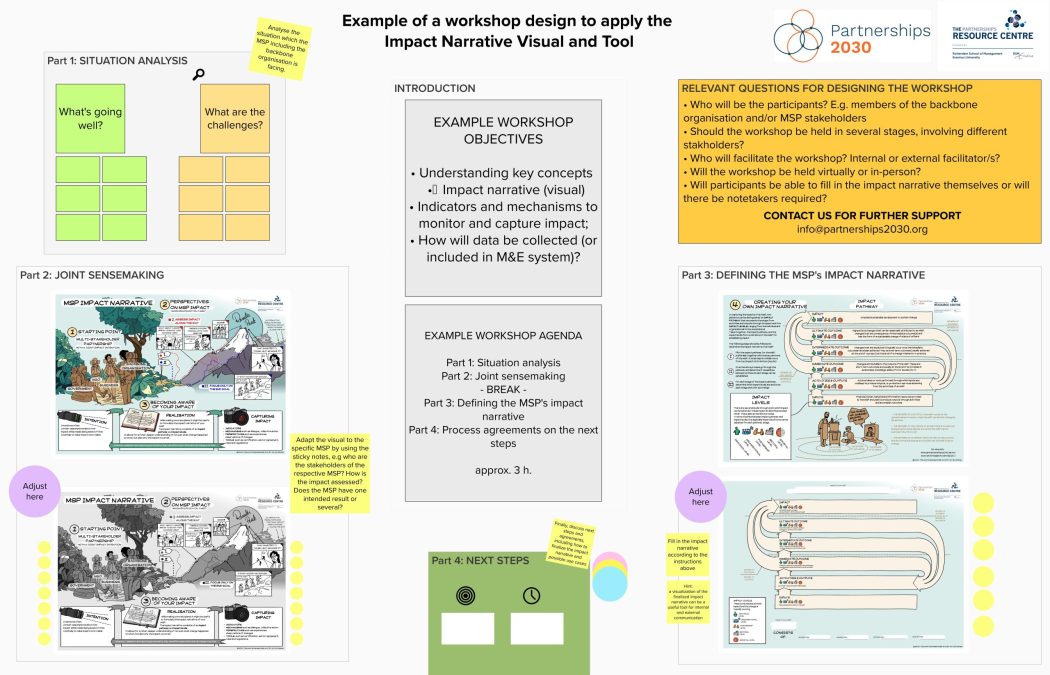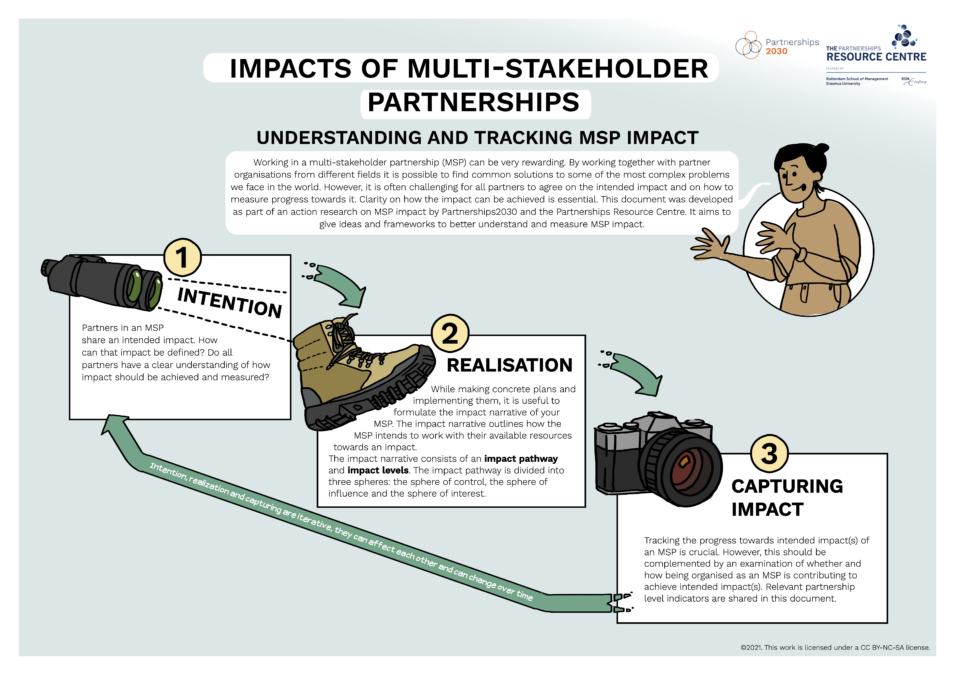Partnerships2030 and the Partnerships Resource Centre (PrC) together with nine MSPs conducted an action research project between 2020 and 2022. The objective was to develop actionable knowledge that can directly help MSPs to better monitor, enhance and communicate their impact. Through a co-creation process, inherent to the action research approach, MSPs were guided through a learning trajectory with two phases bridging the gap between theory and practice. While the first phase put emphasis on developing a better understanding of MSP impact, the second phase shifted the focus towards capturing the MSP impactat partnership level.
Phase 1
Phase 2
The MSPs which have participated in the action research project are:
- German Extractive Industry Transparency Initiative (D-EITI)
- Alliance for Integrity (AFIN)
- Land for Life, Welthungerhilfe (until February 2021)
- The Sustainable Tuna Partnership (STP), WWF Germany
- German Initiative on Sustainable Cocoa (GISCO)
- PREVENT Waste Alliance
- New Energy – New Opportunities for Sustainable Development of Donbas, Germanwatch and Ecoaction (until February 2021)
- Improving non-academic training in pharmacy (ITRAP) in Tanzania, Action Medeor
- Sector Dialogue Automotive Industry (since May 2021)
Often, MSPs already have monitoring systems in place to capture their activities and outputs. However, measuring how working in an MSP contributes to realizing the intended impact is rarely adequately considered. To remedy that, it is helpful to explicitly consider the partnership level and monitor how the shared activities as partners in an MSP contribute to or are part of the intended impact. Typical MSP partnership indicators include: understanding & relationship between MSP members, ownership by MSP members, engagement/commitment, or relevance of the MSP.
Before or while making plans and implementing concrete activities, it is useful for an MSP to formulate and visualize an impact narrative. The impact narrative outlines how the MSP intends to work with their available resources towards their intended impact. Three elements can be distinguished: (1) an impact pathway that documents the steps from activities and outputs through to impact, (2) five impact levels, ranging from the individual and partnership levels to the societal level and (3) three spheres, which indicate how much influence the MSP has on the intended impact. Together, the impact pathway, the impact levels and the spheres of influence create a (visual) narrative for identifying the intended impact. The narrative provides a compelling way of internal reflection on structures, processes and aims of the MSP, as well as resource allocation within the MSP.

Impacts of Multi-Stakeholder Partnerships (2022) (DE), (ES) & (FR)
The guide on how MAPs can better understand, capture and communicate their impacts. The impact narrative is discussed as a helpful implementation tool.
Impact and Impact Assessment of Multi-Stakeholder Partnership (MSP) Support Platforms (2020)
(DE)
Platforms for MSPs offer support services such as incubating partnerships, facilitating knowledge exchange, peer learning and generally strengthening MSPs. The special role of MSP Support Platforms requires elaborate tools of impact assessment, which differ from those of MSPs or projects.



